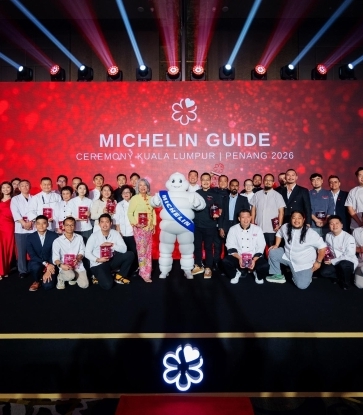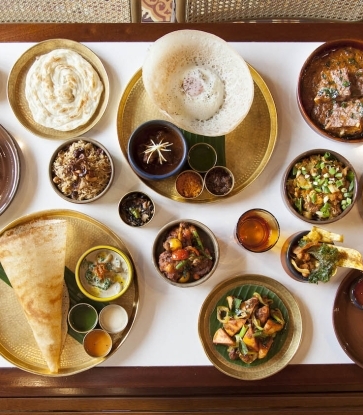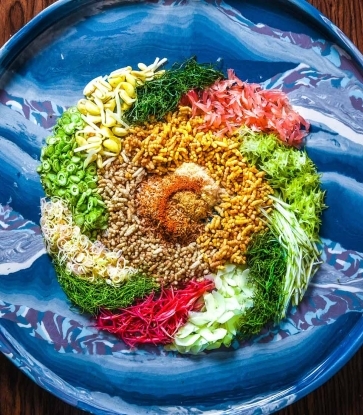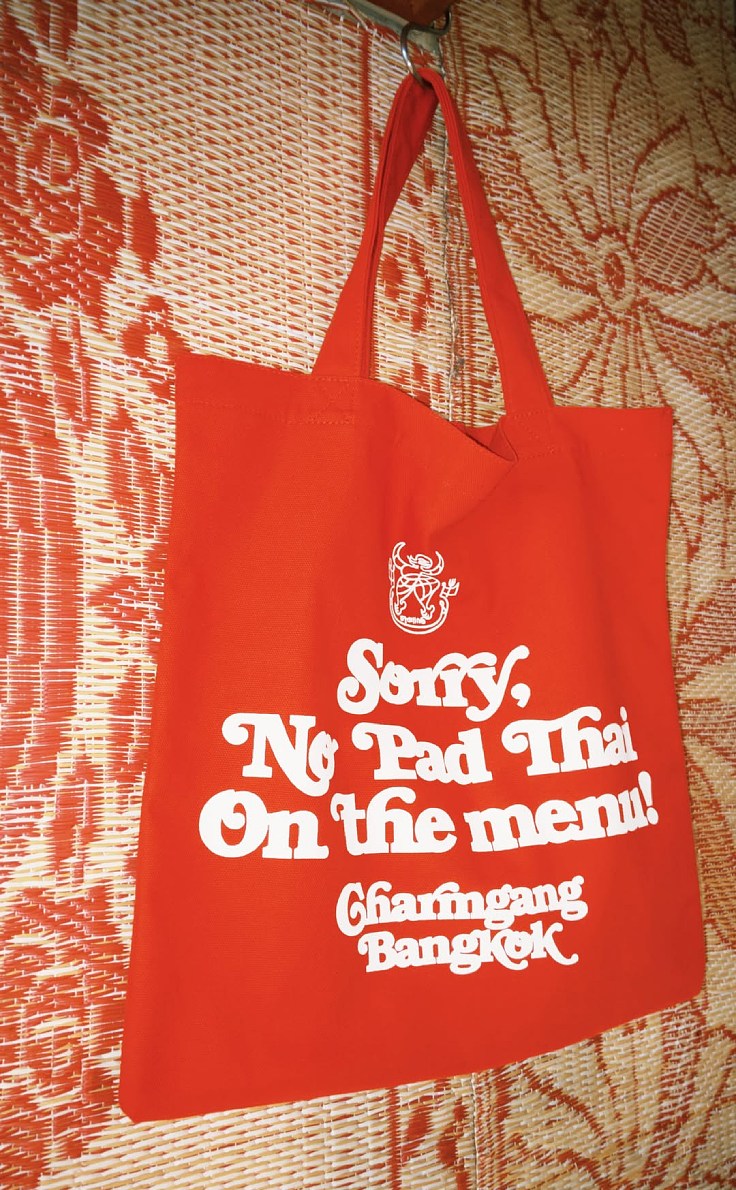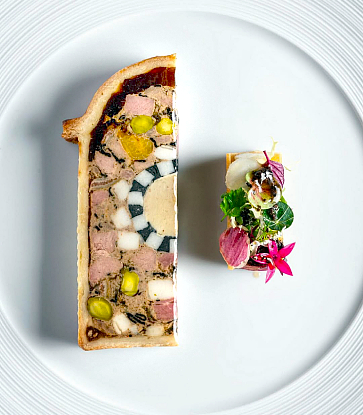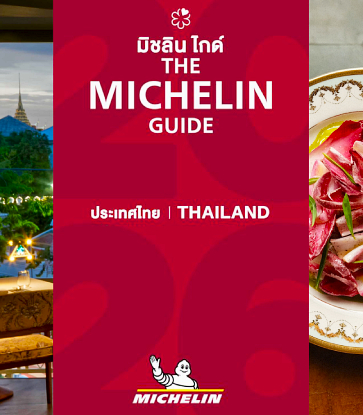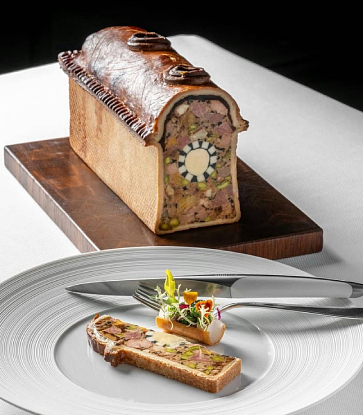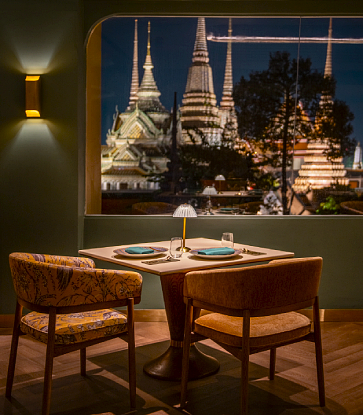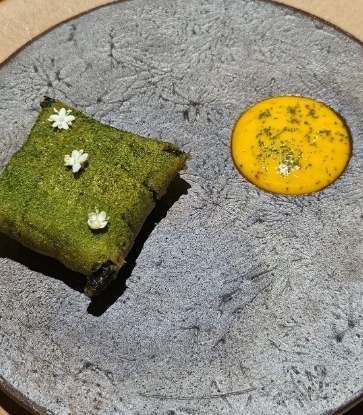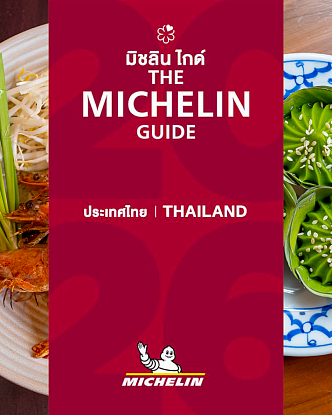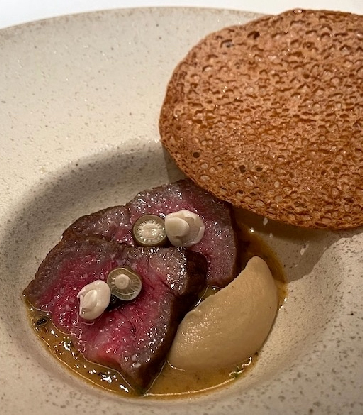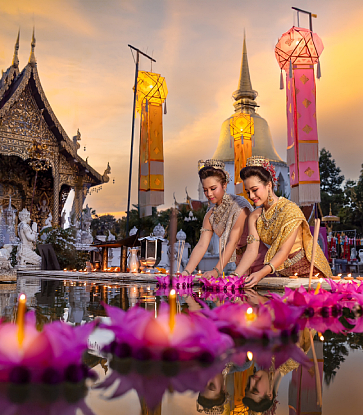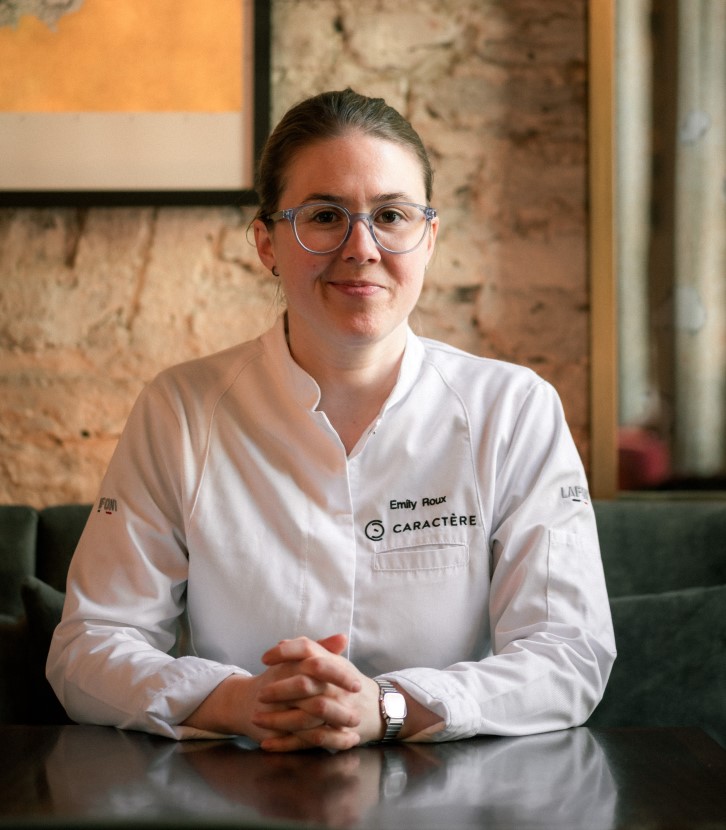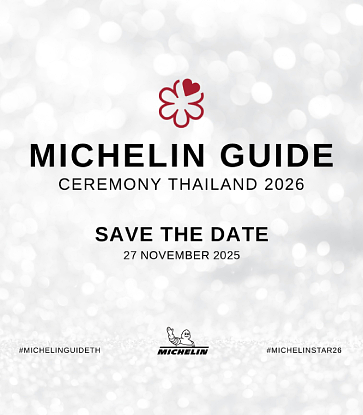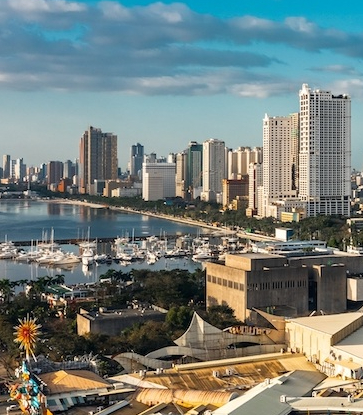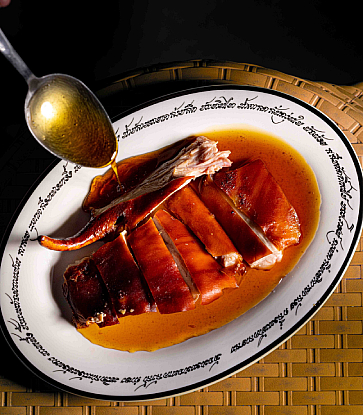Just a stone’s throw from Bangkok’s Parliament House and its gilded stupa, One MICHELIN Star Thai restaurant, Chim by Siam Wisdom, is a go-to for those seeking authentic Thai food. Helmed by Chef Thaninthorn “Noom” Chantrawan — winner of Iron Chef Thailand — the friendly founder is revered for giving royal Thai cuisine a modern touch.
Since earning his first MICHELIN Star in 2017 and maintaining it to this day, Chantrawan continues to charm diners with echoes of Thailand’s bygone era, serving classical Thai flavors based on palace recipe books — all set in a vintage house that dates back to the reign of King Rama VI.
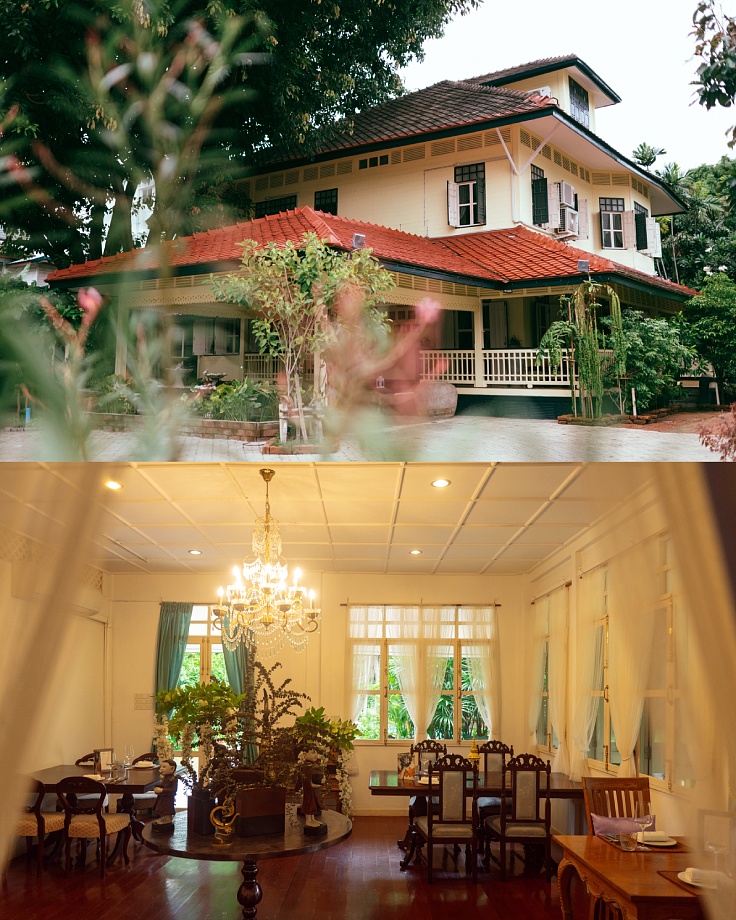
The quaint house — surrounded by a lush garden, bean-shaped swimming pool and Thai pavilion — was once the private residence of an officer of the royal guard. Over the past hundred years, since it was first built, the house was once a Museum of Floral Culture at one point, although little of the golden teak building has changed. Inside the main house, themed rooms, such as Flora Room, Sam Sen Room, Chinese Room and Vietnamese Room, are a nod to the history-laden locale and various influences that have shaped the Rattanakosin era.
This era, which marks the founding of the current capital, profoundly inspires the chef. Drawing from the house’s history and local ingredients discovered during his culinary journeys, Chantrawan changes the set menu at Chim by Siam Wisdom every quarter to highlight each season’s bounty.
Recently launched for the rainy season, the new set menu, The Middle Glory 1851–1937, captures the cultural and culinary peak of the mid-Rattanakosin era.
“That period was a flourishing era of culture,” Chantrawan explains. “We had Chinese, Vietnamese, French and Portuguese people coming into Thailand — Siam at the time. This new menu is still Thai food, but it touches on the many cultures that have influenced it.”
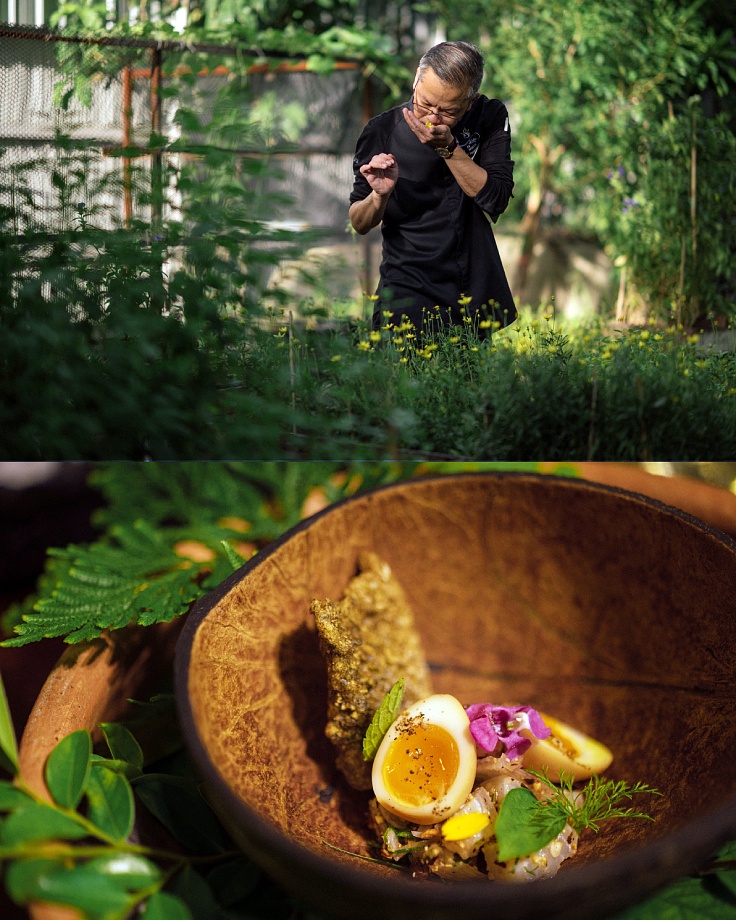
Creating the menu
Diners seeking authentic Thai flavors needn’t worry about fusion food. The chef ensures all recipes originate from cookbooks written by Siamese noblewomen renowned for their culinary expertise, such as Plian Phasakorawong and Mom Somchin Rachanupraphan.“We go deep in the sense of asking, ‘How did Thai food come about?’” the chef says. “It’s about how we learned to stir-fry like the Chinese, how we were introduced to spices from India, and how we adapted ceviche from the Portuguese. This house was built during the Rattanakosin era and brings everything together.
“We have to admit that dishes like spring rolls are not originally Thai — they’re Vietnamese — but Thais have made them delicious in our own way, using the ingredients we have.”
That said, a crab lon (cream dip) fried spring roll is one of the three amuse bouches. To refine the era’s culinary harmony into seven courses, Chantrawan draws inspiration from Thailand’s richness in mountains, rivers, and oceans by including duck, beef, fish, pork spareribs and tiger prawn from across the region. The main course culminates in a samrab, where many dishes are shared family-style alongside jasmine rice steamed with coconut water.
All dishes are new creations, but his signature dish, tom yam pla chon boran (ancient noble-style tom yam soup with snakehead fish), remains a lasting fixture on the menu. No visit to Chim by Siam Wisdom is complete without a taste of this iconic soup, which revives a long-lost, 200-year-old recipe from the royal palace. “People usually think a tom yam just tastes zingy, sour and spicy, but this one has much more dimension,” reveals Chantrawan. “Once you taste it, you will be taken back in time and understand how it is different from the ones served today, which may be thickened with cream.”
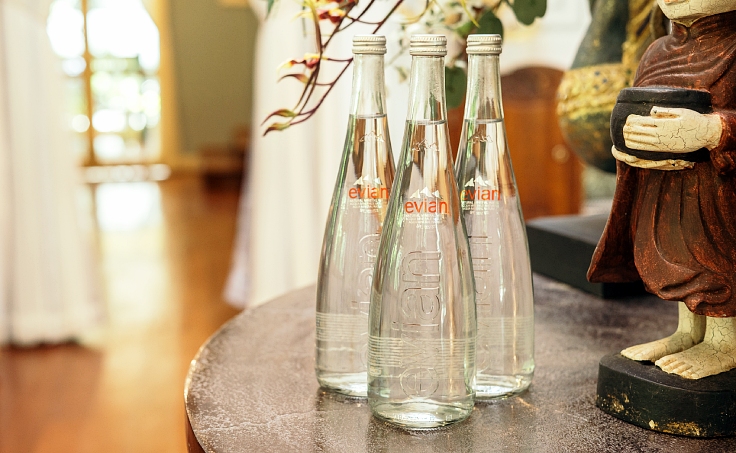
Elevating dishes with hidden techniques
As Chantrawan insists on supporting local producers mostly, his cooking is strictly free of imported ingredients. When it comes to his biggest challenges, he lists making chili pastes daily and sourcing the freshest seafood. To cook the hearty chunks of snakehead fish (pla chon na) in his famous tom yam, the chef favors catches from Nakhon Sawan province. “They come from Bueng Boraphet, which is the largest freshwater lake in Thailand,” he explains. “People catch them using fishing lines, and because they live in a natural environment, they don’t have the muddy or unpleasant odor often associated with farmed fish.”By using laborious and meticulous techniques, each ingredient is allowed to shine. Unlike most places, the fish tom yam here includes rice added directly into the soup. Historically, this practice helped nobles decide when to add certain ingredients in an era before clocks — and also made the soup thicker.
Lately, Chantrawan has taken it a step further by using mineral water to make his broth. Often overlooked by many, using refined water can elevate flavors and completely transform a dish. “When I tried cooking with mineral water, it required us to use less seasoning,” he says. “It helps, as I don’t need to add as much fish sauce, chili paste or garlic into the soup due to its minerality.”
Naturally occurring electrolytes and minerals in Evian, such as calcium and magnesium, are the reason behind the water’s cool, crisp taste. With its rich and stable mineral composition, the water makes for a perfect foundation for graceful soups. This is also the case with the restaurant’s consommé, kaeng nok mor, a deconstructed curry where clear soup is poured onto hand-pulled chicken, julienned squid, mango and rice noodles. Although delicate and light on the stomach, the clear soup retains its salty punch from the use of salted fish.
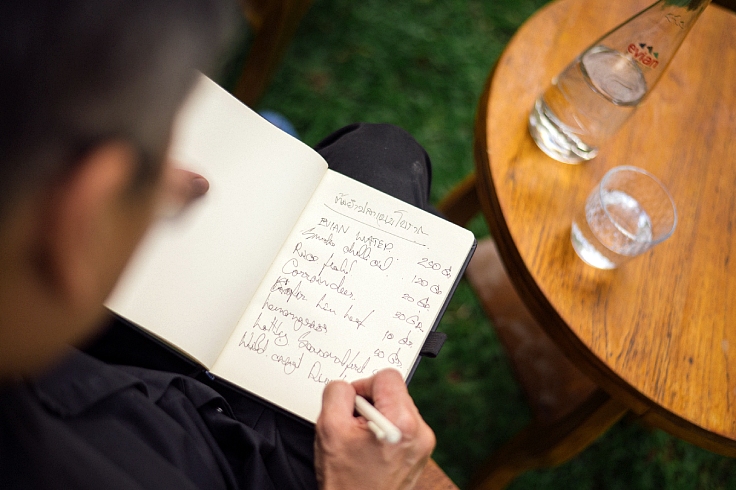
Small details that make the experience
Chantrawan’s fastidious attention to every aspect of his restaurant extends to what diners may not see — but will surely taste. Even the fermented products use Evian mineral water, as showcased in a satisfyingly crunchy pickled Bengal currant (mamuang hao manao ho) served alongside roasted duck.“We use mineral water as it reduces labor,” Chantrawan explains. “The water is so pure, and we don’t have to boil or filter it again, which is less work for us. I like to soak or wash my vegetables with Evian mineral water too, because its mineral ions help vegetables retain their structure and texture. This is something that must be added to Thai food and answers the age-old question of how to elevate and make Thai food more delicious. We must use the finest things — whether that be water, service staff or ingredients.”
And what if his Thai food is too spicy?
“We serve cucumber,” he quips. “Also, it’s very subtle and you may not realize it, but by serving mineral water like Evian here, it helps cleanse your palate. If you’ve eaten soups or stir-fries, the water truly clears your palate to fully receive all the flavors of the next dish. When you’re here, you should taste the real thing. Not all Thai food is spicy, but the dishes that are meant to be — should stay that way.”
Just like Evian — the French still water brand which is naturally filtered through glacial rocks over 15 years in the French Alps, Chantrawan shares a deep respect for geographical purity and process.
“It’s important to have that knowledge about which vegetables perform best in each season,” the chef concludes. “We also look into what ancient people ate back then. People say you must get holy basil from Nakhon Pathom, lime from Samut Prakan, bird’s eye chili from Sam Phran district and pomelo from Nakhon Chai Si district. Nowadays, what’s most important is you must taste it so you know for a fact that it is truly good. You must let your palate distinguish if it is truly pure and if its origin source is good.”
Illustration image: © Anuwat Senivansa Na Ayudhya/ MICHELIN Guide Thailand




